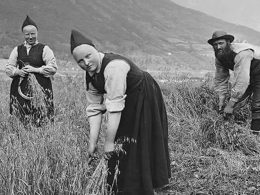The Power of Machine Vision in Precision Agriculture Practices is a game-changer for farmers and agricultural professionals. With the increasing demand for food and the need to reduce environmental impact, precision agriculture has become a crucial aspect of modern farming. Machine vision technology plays a vital role in this process, enabling farmers to make data-driven decisions and optimize their operations.
Machine vision is a type of computer vision that uses cameras and sensors to capture images and data from the field. This data is then analyzed using advanced algorithms to detect and identify various aspects of the crop, such as growth stage, health, and yield potential. By leveraging machine vision, farmers can gain valuable insights into their crops and make informed decisions about irrigation, fertilization, and pest control.
Benefits of Machine Vision in Precision Agriculture
There are several benefits to using machine vision in precision agriculture. Firstly, it enables farmers to reduce waste and increase yields by identifying areas of the crop that require attention. Secondly, it helps to reduce the use of chemicals and pesticides by targeting specific areas of the crop that are affected by pests or diseases. Thirdly, it allows farmers to optimize their irrigation systems by identifying areas of the crop that require more water.
“Machine vision is a powerful tool that can help farmers to produce more food with less waste and less environmental impact.”
In addition to these benefits, machine vision can also help farmers to improve the quality of their crops. By analyzing the color, texture, and shape of the crop, farmers can identify areas that are not meeting their quality standards and take corrective action. This can help to improve the overall quality of the crop and increase its value.
Challenges and Limitations of Machine Vision in Precision Agriculture
While machine vision is a powerful tool, it is not without its challenges and limitations. One of the main challenges is the need for high-quality images and data. This can be difficult to achieve, especially in areas with poor lighting or weather conditions. Another challenge is the need for advanced algorithms and software to analyze the data and make accurate predictions. This can be a complex and time-consuming process, requiring significant expertise and resources.
Conclusion
In conclusion, machine vision is a powerful tool that can help farmers to produce more food with less waste and less environmental impact. By leveraging machine vision technology, farmers can gain valuable insights into their crops and make informed decisions about irrigation, fertilization, and pest control. While there are challenges and limitations to using machine vision in precision agriculture, the benefits far outweigh the costs. As the demand for food continues to grow, it is essential that farmers adopt innovative technologies like machine vision to meet the challenge.









